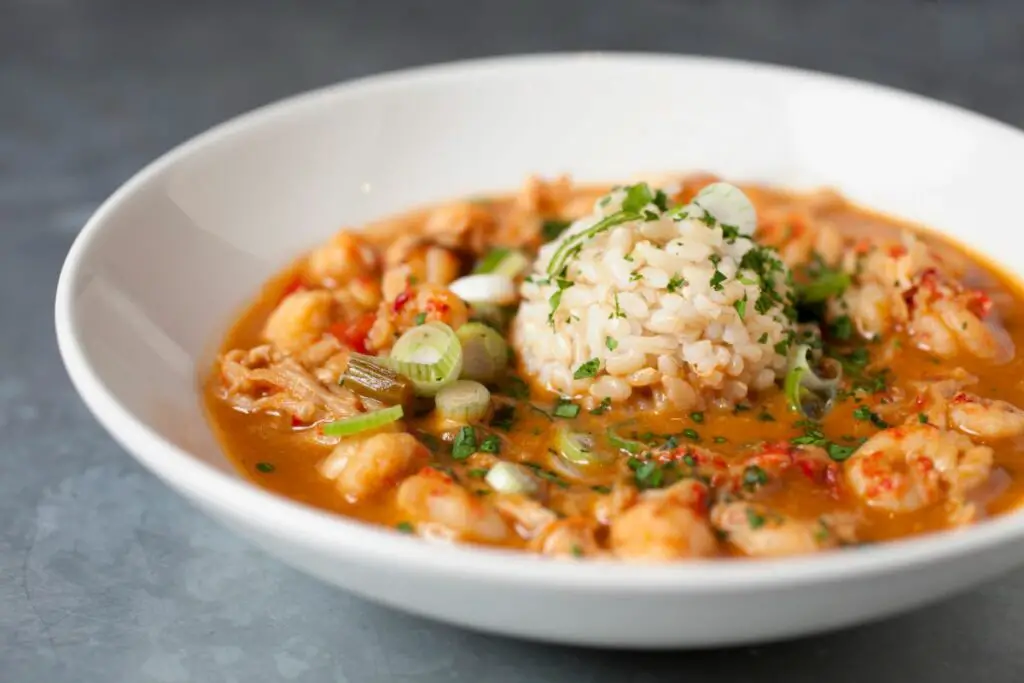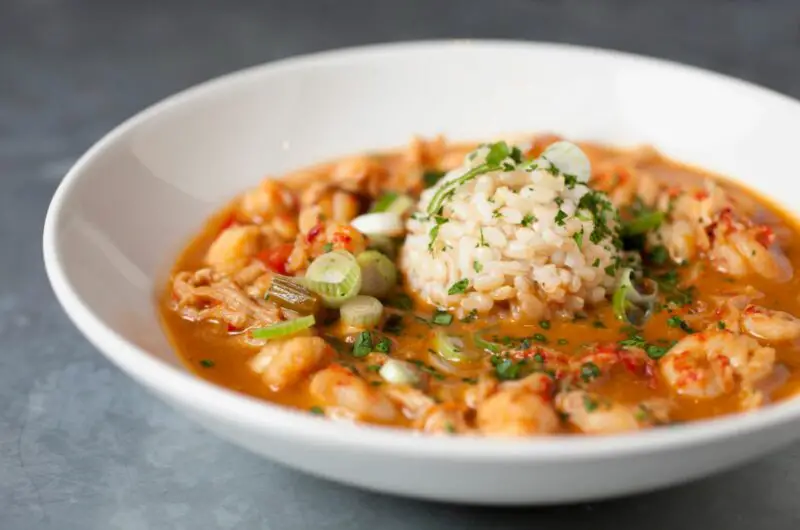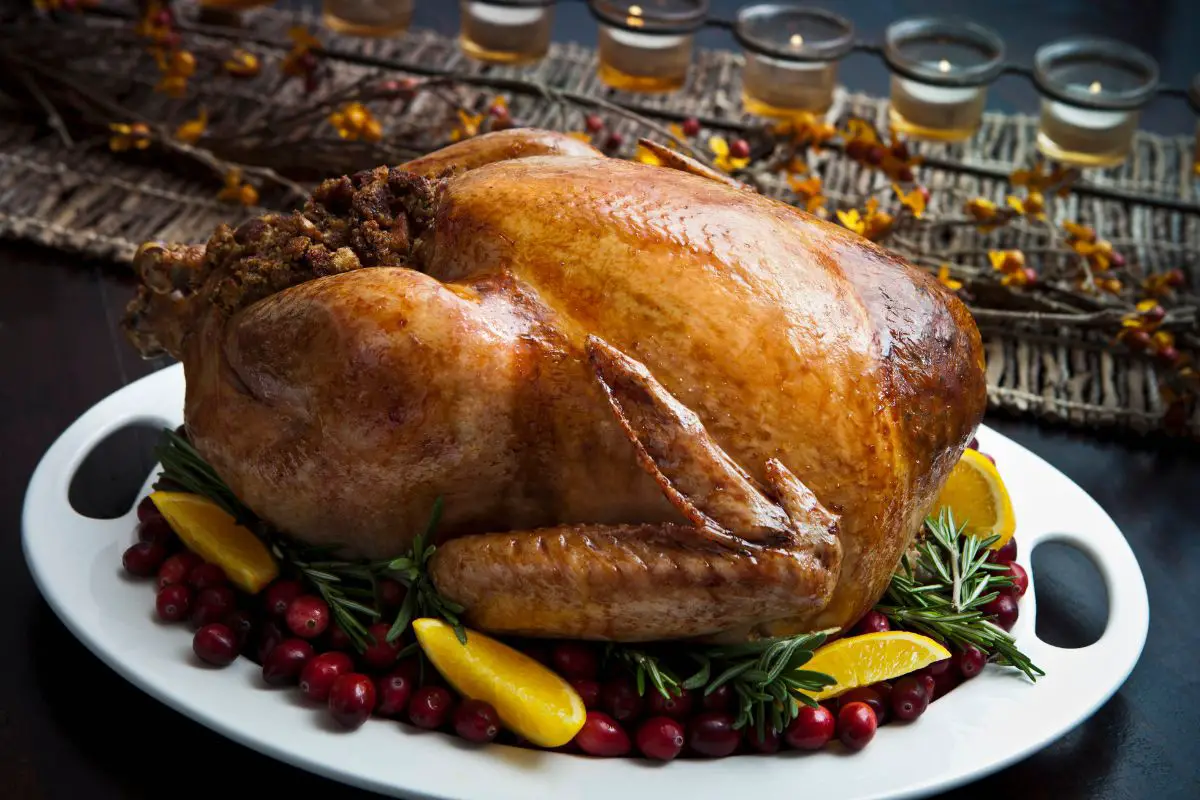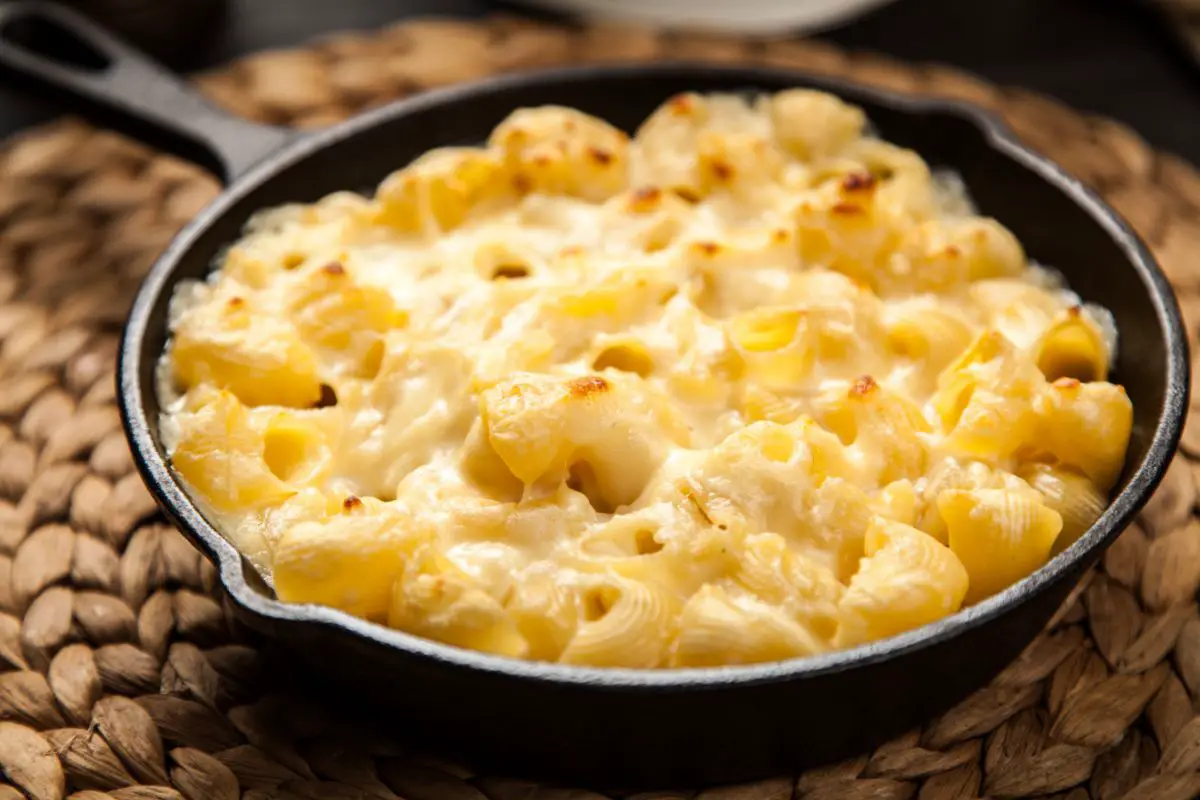Étouffée, a quintessential dish of Louisiana Creole cuisine, is beloved for its rich, flavorful sauce and tender seafood, typically served over rice.
This dish is a testament to the culinary diversity of New Orleans, blending French, Spanish, and African influences into a comforting, hearty meal.
Leah Chase, known as the “Queen of Creole Cuisine,” has been instrumental in popularizing Étouffée, bringing her unique flair to this traditional dish.

Her version, along with others inspired by it, showcases the depth and versatility of Creole cooking.
In this article, we’re going to dive into Leah Chase’s Crawfish Étouffée recipe from The Dooky Chase Cookbook, alongside other chefs’ interpretations.
Étouffée: A Background
Étouffée, meaning “smothered” in French, is a dish that epitomizes the melding of cultures in Louisiana’s culinary history.
It starts with a roux, a mixture of fat and flour, to which the “Holy Trinity” of onions, celery, and bell peppers are added, followed by stock and seafood, typically crawfish or shrimp.
This method of cooking, which involves simmering the seafood in a thick sauce, allows the flavors to meld together beautifully, creating a dish that is both rich and satisfying.
The origins of Étouffée can be traced back to the early 20th century in the Acadiana region of Louisiana, though its exact origins are debated.
Some believe it was a way for cooks to make a hearty meal from the crawfish abundant in the bayous, while others see it as a testament to the Creole culture’s ability to create complex flavors from simple ingredients.
Leah Chase’s contribution to Étouffée cannot be overstated. Her recipes have helped to elevate the dish from a simple home-cooked meal to a celebrated part of Creole cuisine.
By incorporating ingredients like green onions, parsley, and cayenne pepper, Chase’s version adds depth and spice, reflecting the diverse flavors of New Orleans cooking.
Her Crawfish Étouffée, in particular, has been hailed as a classic, a perfect example of how traditional techniques and local ingredients can come together to create something truly special.
Leah Chase Crawfish Étouffée From The Dooky Chase Cookbook
Leah Chase’s Crawfish Étouffée recipe from The Dooky Chase Cookbook is a masterpiece of Creole cooking, offering a rich tapestry of flavors that celebrate the essence of New Orleans cuisine.
The recipe calls for a base of green onions, bay leaves, green peppers, celery, parsley, thyme, ground cayenne pepper, and dried red pepper flakes, creating a complex and aromatic foundation.
Margarine is used to sauté these ingredients, melding the flavors together before introducing the cooked crawfish tail meat.
The beauty of Chase’s recipe lies in its simplicity and depth. The combination of herbs and spices, balanced with the sweetness of the crawfish and the richness of the margarine, results in a dish that is both comforting and sophisticated.
The use of margarine, a departure from the traditional butter or oil found in roux-based dishes, adds a unique smoothness to the sauce, allowing the flavors of the seafood and vegetables to shine through.
Cooking the crawfish with this flavorful base ensures that every bite is infused with the essence of the seasonings, while the addition of a roux, made from the margarine and flour, thickens the sauce, enveloping the crawfish in a velvety, spicy blend.
This technique, fundamental to Creole cooking, demonstrates Chase’s culinary prowess and her commitment to preserving the traditions of New Orleans cuisine.
Serving this étouffée over a bed of fluffy white rice allows the dish to be fully appreciated as the rice absorbs the sauce, making every spoonful a delightful experience.
3 Étouffée Recipes From Other Chefs To Enjoy
1. Best Étouffée Recipe
This shrimp Étouffée recipe stands out for its rich, dark roux and the perfect blend of spices, including smoked paprika, oregano, and cayenne pepper.
The roux, made from unsalted butter and flour, is cooked to a milk chocolate color, offering a deep base for the dish.
The “Holy Trinity” of onion, celery, and bell peppers, along with garlic and scallions, are sautéed in the roux, introducing layers of flavor.
Shrimp, seasoned with kosher salt and baking soda for texture, are then simmered in a sauce made from clam juice and diced tomatoes, enriched with Worcestershire sauce and Tabasco for a hint of tang and heat.
Served over rice, this recipe is a testament to the versatility and depth of Étouffée.
2. Crawfish Étouffée
The 2008 Étouffée cook-off winner, this Crawfish Étouffée recipe emphasizes a blonde roux and a rich shrimp stock as its foundation.
Butter, flour, and a careful blend of seasonings, including Randol’s all-purpose seasoning, create a light yet flavorful base.
The “Holy Trinity,” enhanced with garlic, is sautéed until transparent, then simmered with shrimp stock, adding body and depth.
Blonde roux is whisked in, ensuring a smooth, velvety texture.
Crawfish tails are gently cooked in this rich sauce, absorbing the flavors and spices.
Garnished with green onions, this version of Étouffée celebrates the delicate sweetness of crawfish, offering a slightly lighter take on the traditional dish.
3. Shrimp Étouffée
Featuring a vegetable oil or lard-based roux, this Shrimp Étouffée recipe introduces a robust flavor profile with the addition of jalapeños and homemade shrimp stock.
The roux, cooked to a deep brown, forms the base of the sauce, which is then enhanced with the “Holy Trinity,” garlic, and a mix of Cajun seasoning, celery seed, and sweet paprika. Shrimp are added last, ensuring they remain tender and flavorful.
Optional homemade shrimp stock adds an unparalleled depth, making the sauce rich and complex. Garnished with green onions and served over rice, this version provides a spicy kick, showcasing the adaptability of Étouffée to different tastes and preferences.
What Do You Serve With Étouffée? Serving Suggestions
Étouffée is a dish best enjoyed with accompaniments that complement its rich, savory flavors.
A staple serving suggestion is white rice, which acts as a canvas for the sauce, absorbing its flavors and adding texture.
For a more rounded meal, consider sides like crusty French bread, perfect for sopping up the remaining sauce, or a light, crisp salad to balance the dish’s richness.
Steamed green vegetables, such as green beans or asparagus, can add color and a fresh contrast to the meal.
Cornbread, another southern classic, pairs wonderfully with Étouffée, offering a sweet and savory element that complements the dish’s spiciness.
For beverages, consider serving sweet iced tea or a light beer, both of which provide a refreshing counterpoint to the dish’s bold flavors.
Additionally, a lemon wedge on the side is not only decorative but also allows guests to add a touch of acidity, enhancing the flavors of the seafood.
These serving suggestions are designed to elevate the dining experience, making each bite of Étouffée a celebration of Creole cuisine.
Adaptations To Leah Chase’s Étouffée
Leah Chase’s Crawfish Étouffée is a beloved recipe, but the beauty of Étouffée lies in its adaptability to personal tastes and dietary needs.
For those looking to explore beyond the traditional, consider substituting the crawfish with shrimp or even chicken for a different protein option.
Vegetarians can replace the seafood with hearty vegetables like mushrooms or eggplant, offering a satisfying alternative without losing the essence of the dish.
Adjusting the level of heat is another way to personalize Étouffée.
While Leah Chase’s recipe uses ground cayenne pepper and dried red pepper flakes, individuals can modify the quantity of these spices or incorporate other types, like smoked paprika, for a different flavor profile.
For a healthier version, consider using olive oil or plant-based margarine in place of the traditional margarine, and a gluten-free flour blend can be used to make the roux for those with gluten sensitivities.
Experimenting with additional herbs and spices, such as basil or cilantro, can introduce new flavors to the dish. Incorporating different types of stock, like vegetable or chicken, can also alter the base flavor, allowing for further customization.
Final Thoughts
Leah Chase’s Crawfish Étouffée stands as a testament to her legacy and the enduring appeal of Creole cuisine.
Whether sticking to the traditional recipe or exploring variations from other chefs, Étouffée offers a delicious way to connect with the flavors of New Orleans.
Frequently Asked Questions
It’s a beloved Creole dish featuring seafood, typically crawfish or shrimp, smothered in a rich, roux-based sauce with vegetables and served over rice.
Creole Étouffée often includes tomatoes and a butter-based roux, while Cajun Étouffée usually omits tomatoes and uses an oil-based roux for a darker flavor.
The “Holy Trinity” in Étouffée refers to onions, celery, and bell peppers, a foundational element in Creole and Cajun cooking.
Gumbo is a soupier dish with a thinner base and a wider variety of meats, while Étouffée is thicker, focusing on seafood and served smothered over rice.
Étouffée sauce is crafted from a roux (flour and fat), seafood stock, the “Holy Trinity” of vegetables, spices, and either crawfish or shrimp.
How To Make Leah Chase’s Étouffée Recipe
Course: Other Recipes4
servings30
minutes40
minutes300
kcalDirections
- Choose a recipe from above
- Collect your ingredients
- Prep your meal
- Enjoy.
Recipe Video
https://www.youtube.com/watch?v=1Pja1A2_jWUVideo can’t be loaded because JavaScript is disabled: Etouffee | Crawfish Etouffee | Cajun (https://www.youtube.com/watch?v=1Pja1A2_jWU)- 16 Martha Stewart Baking Recipes You Have To Try - May 29, 2024
- 19 Of The Best Martha Stewart Cake Recipes Ever - May 28, 2024
- How To Make A Tasty Ina Garten Red Velvet Cake At Home - May 24, 2024











